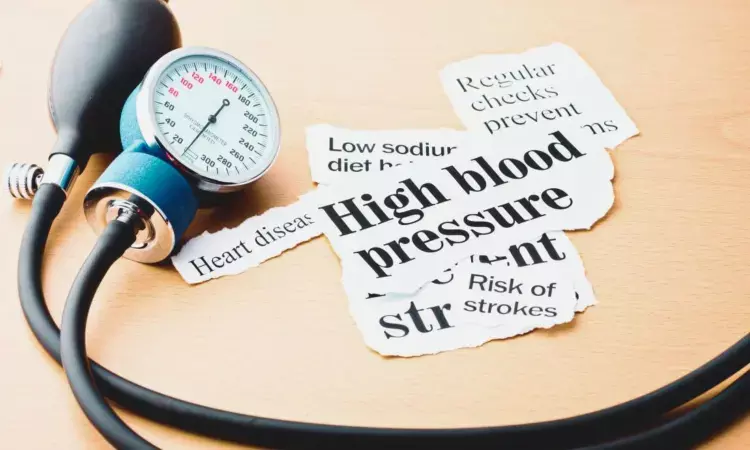- Home
- Medical news & Guidelines
- Anesthesiology
- Cardiology and CTVS
- Critical Care
- Dentistry
- Dermatology
- Diabetes and Endocrinology
- ENT
- Gastroenterology
- Medicine
- Nephrology
- Neurology
- Obstretics-Gynaecology
- Oncology
- Ophthalmology
- Orthopaedics
- Pediatrics-Neonatology
- Psychiatry
- Pulmonology
- Radiology
- Surgery
- Urology
- Laboratory Medicine
- Diet
- Nursing
- Paramedical
- Physiotherapy
- Health news
- Fact Check
- Bone Health Fact Check
- Brain Health Fact Check
- Cancer Related Fact Check
- Child Care Fact Check
- Dental and oral health fact check
- Diabetes and metabolic health fact check
- Diet and Nutrition Fact Check
- Eye and ENT Care Fact Check
- Fitness fact check
- Gut health fact check
- Heart health fact check
- Kidney health fact check
- Medical education fact check
- Men's health fact check
- Respiratory fact check
- Skin and hair care fact check
- Vaccine and Immunization fact check
- Women's health fact check
- AYUSH
- State News
- Andaman and Nicobar Islands
- Andhra Pradesh
- Arunachal Pradesh
- Assam
- Bihar
- Chandigarh
- Chattisgarh
- Dadra and Nagar Haveli
- Daman and Diu
- Delhi
- Goa
- Gujarat
- Haryana
- Himachal Pradesh
- Jammu & Kashmir
- Jharkhand
- Karnataka
- Kerala
- Ladakh
- Lakshadweep
- Madhya Pradesh
- Maharashtra
- Manipur
- Meghalaya
- Mizoram
- Nagaland
- Odisha
- Puducherry
- Punjab
- Rajasthan
- Sikkim
- Tamil Nadu
- Telangana
- Tripura
- Uttar Pradesh
- Uttrakhand
- West Bengal
- Medical Education
- Industry
Application of PREVENT Risk Calculator would reclassify many patients to lower ASCVD risk, shrink statin candidate pool: JAMA

USA: Research suggests that rules for starting statin and blood pressure (BP) medications may be revised with a new and enhanced cardiovascular risk prediction tool.
Employing the PREVENT equations would reclassify 53% of US adults into lower atherosclerotic cardiovascular disease (ASCVD) risk categories, while only 0.41% would be moved to higher risk categories, according to the current definitions by the American College of Cardiology (ACC) and American Heart Association (AHA).
Applying these risk estimates to current treatment criteria would reduce the number of eligible statin users from 81.8 million to 67.5 million and decrease candidates for antihypertensive therapy from 75.3 million to 72.7 million, based on nationally representative projections by Arjun Manrai, Department of Biomedical Informatics, Harvard Medical School, Boston, Massachusetts, and colleagues.
The projected outcome: an additional 107,000 cases of myocardial infarction (MI) or stroke over ten years, the researchers reported in JAMA.
Since 2013, the American Heart Association (AHA) and the American College of Cardiology (ACC) have recommended the pooled cohort equations (PCEs) for estimating the 10-year risk of ASCVD.
A recent AHA scientific advisory group developed the Predicting Risk of Cardiovascular Disease EVENTS (PREVENT) equations, which now include kidney measures, exclude race as a factor, and offer improved calibration for contemporary populations. While PREVENT equations yield lower ASCVD risk predictions than the PCEs, the potential clinical implications of these differences have yet to be fully quantified.
Against the above background, James A. Diao, Department of Biomedical Informatics, Harvard Medical School, Boston, Massachusetts, and colleagues estimated the number of US adults who would experience changes in risk categorization, treatment eligibility, or clinical outcomes when applying PREVENT equations to existing ACC and AHA guidelines.
The study analyzed a nationally representative cross-sectional sample of 7,765 U.S. adults aged 30 to 79 years, who participated in the National Health and Nutrition Examination Surveys from 2011 to March 2020, with response rates ranging from 47% to 70%.
The main outcomes measured included differences in predicted 10-year ASCVD risk, risk categorization by the ACC and AHA, eligibility for statin or antihypertensive therapy, and projected occurrences of myocardial infarction or stroke.
The study led to the following findings:
- In a nationally representative sample of 7765 US adults aged 30 to 79 years (median age, 53 years; 51.3% women), it was estimated that using PREVENT equations would reclassify approximately half of US adults to lower ACC and AHA risk categories (53.0%) and very few US adults to higher risk categories (0.41%).
- The number of US adults receiving or recommended for preventive treatment would decrease by an estimated 14.3 million for statin therapy and 2.62 million for antihypertensive therapy.
- The study estimated that over 10 years, these decreases in treatment eligibility could result in 107,000 additional occurrences of myocardial infarction or stroke.
- Eligibility changes would affect twice as many men as women and a greater proportion of Black adults than White adults.
"Using the PREVENT equations to assign lower ASCVD risk predictions could lead to a reduction in eligibility for statin and antihypertensive therapy among 15.8 million U.S. adults by adjusting current treatment thresholds," the researchers concluded.
Reference:
Diao JA, Shi I, Murthy VL, et al. Projected Changes in Statin and Antihypertensive Therapy Eligibility With the AHA PREVENT Cardiovascular Risk Equations. JAMA. Published online July 29, 2024. doi:10.1001/jama.2024.12537
Dr Kamal Kant Kohli-MBBS, DTCD- a chest specialist with more than 30 years of practice and a flair for writing clinical articles, Dr Kamal Kant Kohli joined Medical Dialogues as a Chief Editor of Medical News. Besides writing articles, as an editor, he proofreads and verifies all the medical content published on Medical Dialogues including those coming from journals, studies,medical conferences,guidelines etc. Email: drkohli@medicaldialogues.in. Contact no. 011-43720751


